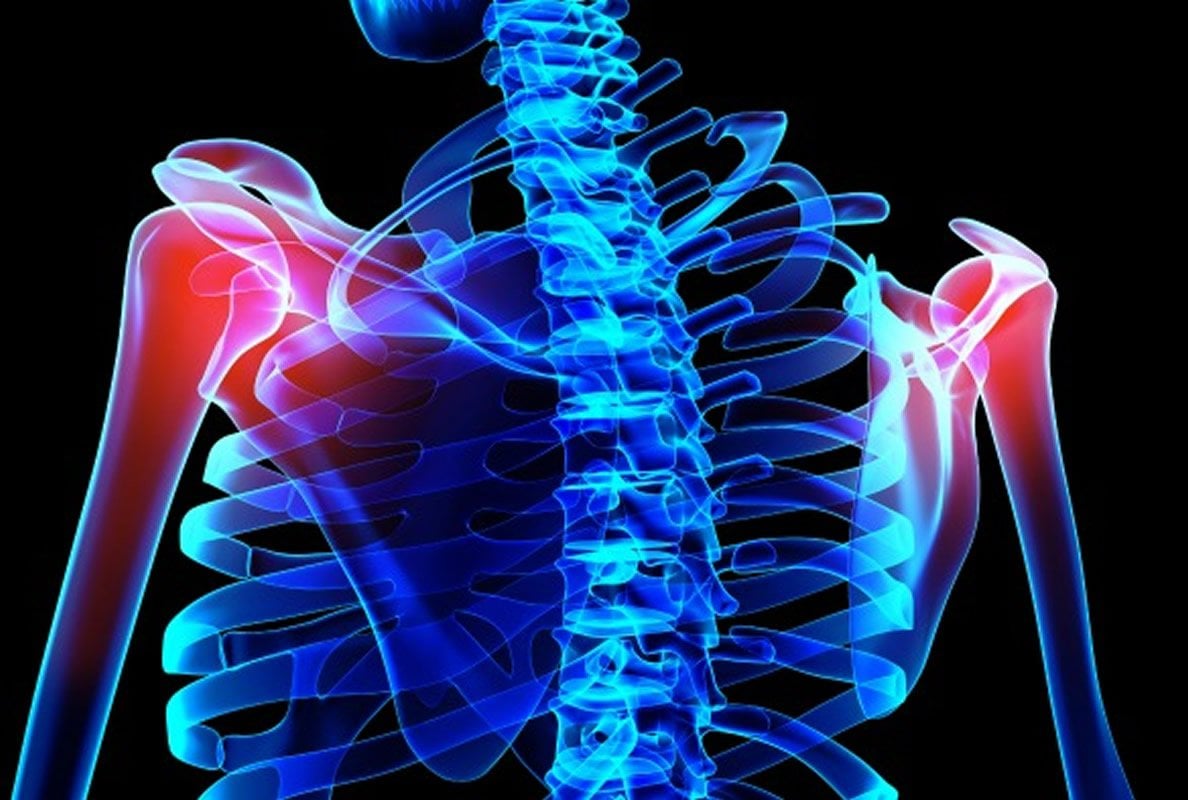Summary: Blocking the activity of interleukin-1 in mouse models of complex regional pain syndrome (CRPS) helped reverse symptoms. Researchers say patients with CRPS should respond to immune-based treatments which reduce some of the disease features.
Source: University of Liverpool
A study, published today in PNAS, has found a potential treatment for patients with Complex Regional Pain Syndrome (CRPS).
CRPS is a severe post-traumatic pain condition affecting one or more limbs and is associated with regional pain and sensory, bone and skin changes. The causes of CRPS, however, are yet to be fully understood.
Approximately 15 percent of patients with CRPS still have symptoms one year after onset that severely impact their quality of life. For these patients, prognosis is often poor and drug therapy for pain relief is rarely effective.
A team of international researchers, led by Dr Andreas Goebel from the University of Liverpool’s Pain Research Institute, conducted a study to better understand the immunological causes for CRPS.
The researchers examined antibodies in the serum of these patients to ascertain the potential role of these proteins for causing the condition; they were particularly interested to assess ‘neuroinflammation’ – antibody-induced raised levels of inflammatory mediators such as Interleukin 1 (IL-1) in either peripheral tissues or brain.
IL-1 is known to normally induce local and systemic body-responses aimed to eliminate microorganisms and repair tissue damage. However, an increasing number of clinical conditions have been identified in which IL-1 production is considered inappropriate and IL-1 is part of the cause of the disease.
The researchers transferred the antibodies from patients with long-lasting CRPS to mice and found that these antibodies consistently caused a CRPS-like condition. An important element of ‘transferred CRPS’ was glial cell activation, a type of ‘neuroinflammation’ in pain-related parts of the mouse brains. The team then discovered that ‘blocking’ of IL-1 with a clinically available drug, ‘anakinra’ helped to both prevent and reverse all of these changes in the animals.

Researchers from the University of Pécs (Hungary), University of Budapest (Hungary), University of Manchester, University of Sheffield and The Walton Centre National Health Service Foundation Trust in Liverpool were also involved in the study.
Dr Andreas Goebel, said: “Our results support previous clinical observations that patients with persistent CRPS should respond to immune treatments with a reduction of at least some of their disease features.
“This approach has attractive therapeutic potential and could also have a real impact on the treatment of other unexplained chronic pain conditions; we plant now to apply for funds funds to test the effect of this and similar drugs in patients with CRPS.”
Source:
University of Liverpool
Media Contacts:
Simon Wood – University of Liverpool
Image Source:
The image is credited to University of Liverpool.
Original Research: Closed access
“Transfer of complex regional pain syndrome to mice via human autoantibodies is mediated by interleukin-1–induced mechanisms”. Zsuzsanna Helyes, Valéria Tékus, Nikolett Szentes, Krisztina Pohóczky, Bálint Botz, Tamás Kiss, Ágnes Kemény, Zsuzsanna Környei, Krisztina Tóth, Nikolett Lénárt, Hajnalka Ábrahám, Emmanuel Pinteaux, Sheila Francis, Serena Sensi, Ádám Dénes, and Andreas Goebel.
PNAS. doi:10.1073/pnas.1820168116
Abstract
Transfer of complex regional pain syndrome to mice via human autoantibodies is mediated by interleukin-1–induced mechanisms
Neuroimmune interactions may contribute to severe pain and regional inflammatory and autonomic signs in complex regional pain syndrome (CRPS), a posttraumatic pain disorder. Here, we investigated peripheral and central immune mechanisms in a translational passive transfer trauma mouse model of CRPS. Small plantar skin–muscle incision was performed in female C57BL/6 mice treated daily with purified serum immunoglobulin G (IgG) from patients with longstanding CRPS or healthy volunteers followed by assessment of paw edema, hyperalgesia, inflammation, and central glial activation. CRPS IgG significantly increased and prolonged swelling and induced stable hyperalgesia of the incised paw compared with IgG from healthy controls. After a short-lasting paw inflammatory response in all groups, CRPS IgG-injected mice displayed sustained, profound microglia and astrocyte activation in the dorsal horn of the spinal cord and pain-related brain regions, indicating central sensitization. Genetic deletion of interleukin-1 (IL-1) using IL-1αβ knockout (KO) mice and perioperative IL-1 receptor type 1 (IL-1R1) blockade with the drug anakinra, but not treatment with the glucocorticoid prednisolone, prevented these changes. Anakinra treatment also reversed the established sensitization phenotype when initiated 8 days after incision. Furthermore, with the generation of an IL-1β floxed(fl/fl) mouse line, we demonstrated that CRPS IgG-induced changes are in part mediated by microglia-derived IL-1β, suggesting that both peripheral and central inflammatory mechanisms contribute to the transferred disease phenotype. These results indicate that persistent CRPS is often contributed to by autoantibodies and highlight a potential therapeutic use for clinically licensed antagonists, such as anakinra, to prevent or treat CRPS via blocking IL-1 actions.






